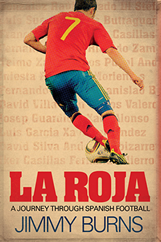Few sights in Catalonia claim to be as emblemic as La Seu Vella on a hill above the city of Lleida,the region’s second largest city .
The group of semi-ruined and restored buildings include the sight of a former conquered Moorish castle, a Cathedral and a military barracks whose last extended use as such was during the early years of the dictatorship of General Franco during the 1940’s.
In this “place of suffering” as some locals call it , there are remnants of plunders as a result of religious and civil wars, and dynastic struggles and more contemporary repression.
The visitor is told that at the height of its glory in medieval times, the Seu was an active administrative complex of noble secular and ecclesiastical buildings from a time when Catalonia enjoyed its first experience of autonomy as part of the Kingdom of Aragon.
Excluded from the official account is any reference to the fact that it was near here in Catalonia that the King of Aragon and the Queen of Castile decided to join forces, unifying Spain.
I was in Lleida yesterday and overnight . It was a local feast day. A Civil Guard helicopter circled during the day but there was no other sign of heightened security. At 10 pm some streets in the centre of town echoed to the sound of saucepans being banged as activist parents with their children gathered for a weekend ‘festival’ in a local school and seemed ready to defy the ban on voting tomorrow along with countless others although there seemed uncertainty as to how far police would go to enforce what the government calls “the rule of law”.
It is in part a mythologised and selective historical narrative of victimisation and heroic endurance that gets served up in the La Seu Vella , of a kind more starkly projected still a fourty minute drive away from Lleida in the town of Les Borges.. There the local museum celebrates the life and times of its one time political representative Francesc Macia, widely regarded as the father of the Catalan independence movement which is currently playing its boldest bid for power since the 1930’s .
It was Macia who in the run-up to the Spanish Civil War broke away from Catalan attempts to integrate with the Spanish state and channelled his energies into developing a left wing Republican independence party.
One of Macia’s failed ideas, after he was exiled to France during the earlier dictatorship of General Primo de Rivera, was to form a Catalan army financed by communist Russia made up of Italian mercenaries . The project failed though a mixture of poor organisation and a lack of popular support.
Macia later antagonised moderate Catalans by unilaterally declaring the Independent Republic of Catalonia , in defiance of the Spanish Republic launched in 1931, a move that contributed to the Spanish Civil War which he never lived to experience.
He died of an illness in 1933, destined to be forever venerated by radical independists. The museum , places him in a pantheon of other independence fighters, including Nehru, Michael Collins , and Kenyatta.
When I visited the museum today, the whole surrounding town was decked out in independence flags and those on a guided tour in Catalan talked about how determined they were to go and vote tomorrow. Ohers I talked to said they would not because they did not agree with independence although they were not prepared to go out and protest against it.
I spotted one Mosso de Esquadra car at the entrance to the town, keeping an eye on incoming and outgoing traffic. It was market day- a reminder of just how rich in olives, vegetables, and almonds this region of Spain is.But the talk was not of the harvest but of the vote.
Mythology and emotion has been much in evidence these last days as Catalonia prepares for quite what no one really knows will come next . Catalans are known for their creativity. The choreography of the pro-independence movement has so far been disciplined and in propaganda terms largely effective in projecting a sense of impassioned but peaceful civic protest against a heavy handed central government. –many Davids taking on Goliath. But unlawful tomorrow’s planned vote is the judges have dictated, and the votes that get through are likely to fall short of being seem as a representative majority support for independence.
In street terms the protests called by far right groups in Spanish cities in defence of the unity of Spain ’ today were much smaller in number than the pro-vote 80,000 rally in Barcelona yesterday but this does not mean that Catalan independence has any legitimate mandate as things stand.
The situation could enter a whole new dynamic if police take more active measures this Sunday to stop the vote, and radical elements among the protestors take them on. As it is more radical pro-independence supporters are determined to keep up the momentum regardless of the result on Sunday. It remains to be seen whether the movement can be contained or appeased
For now Spain generally is struggling to come to terms with the biggest political crisis the county has faced since the death of Franco with no sign of a consensus in Madrid and Barcelona as what might be the best political formula for defusing it.

